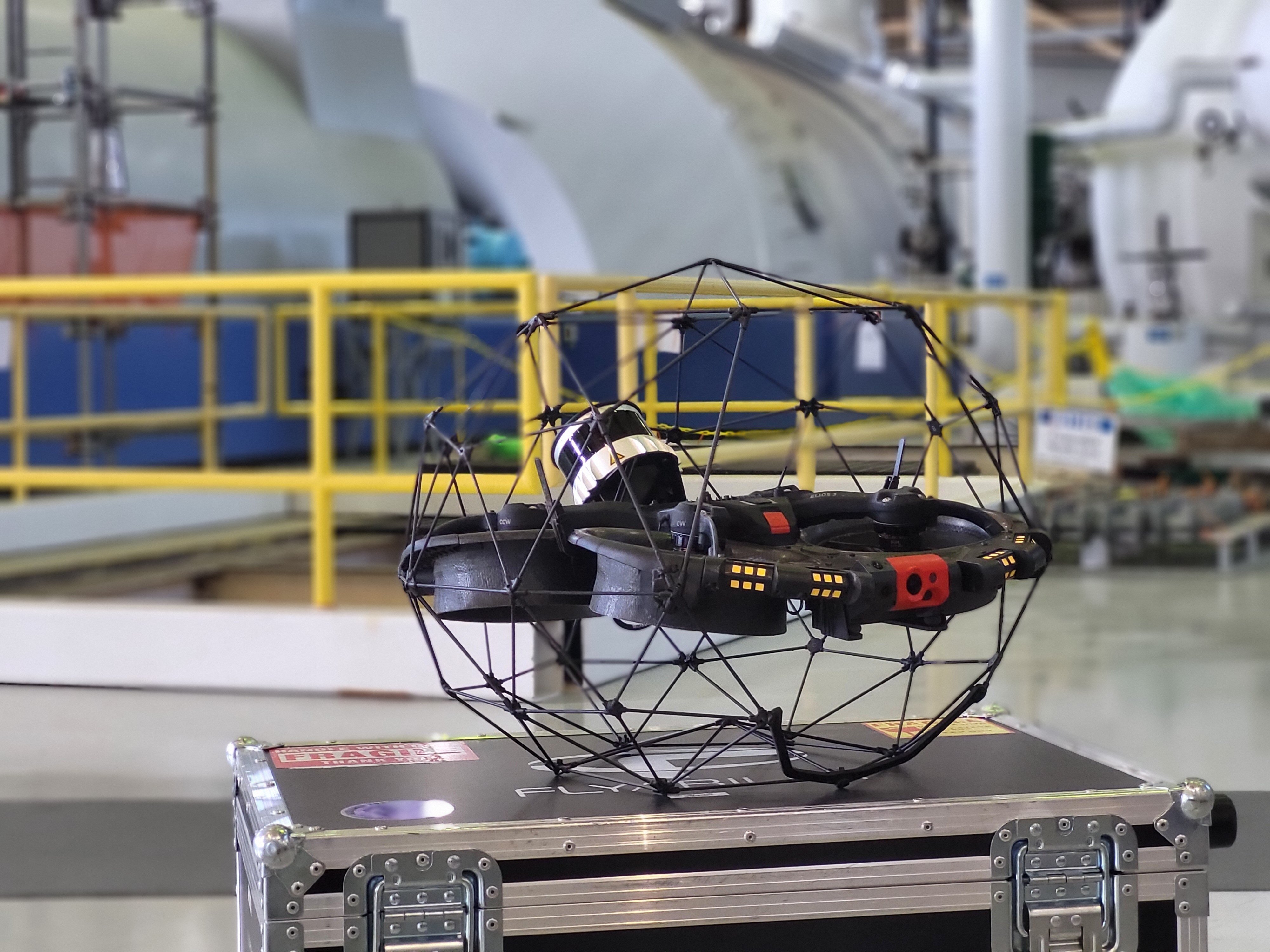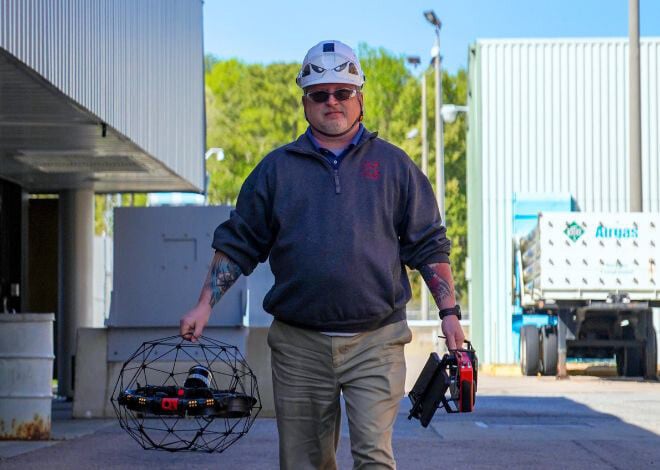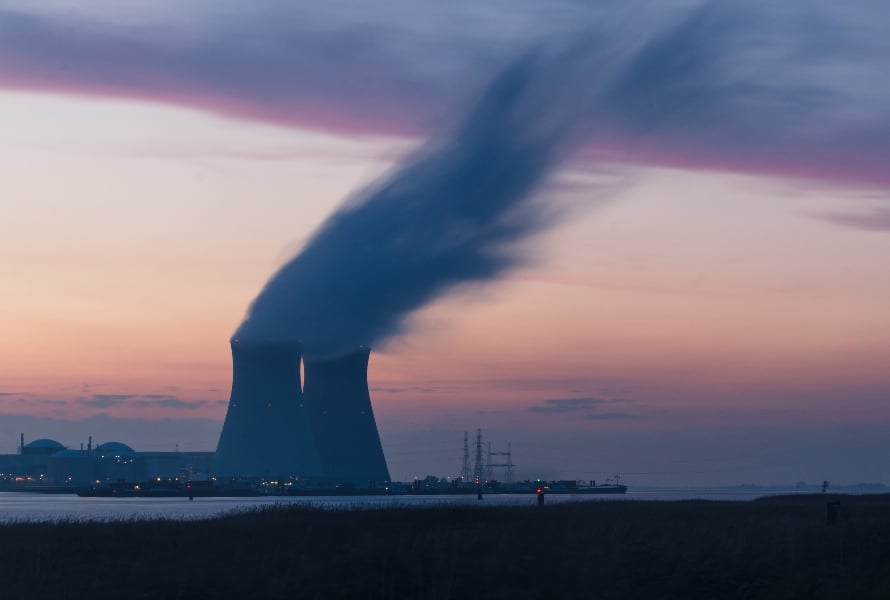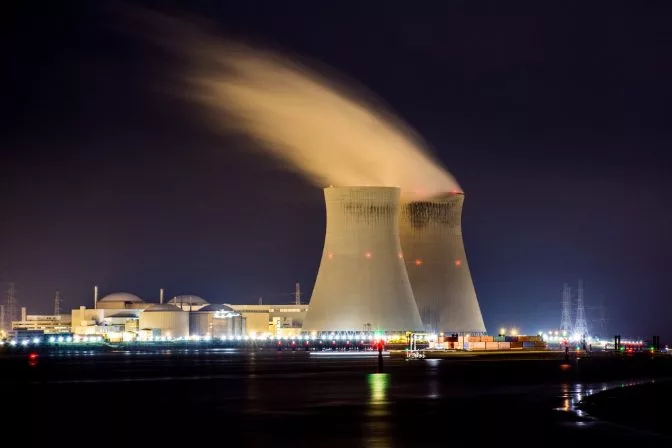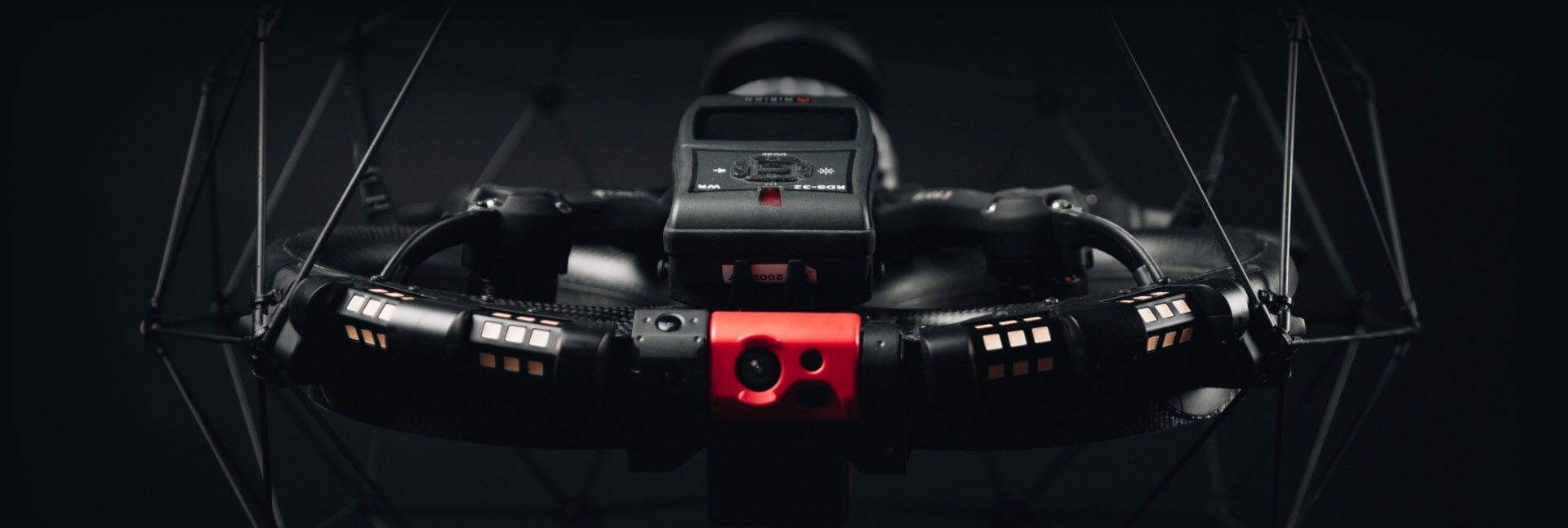- Blog >
- 10 Elios 3s and Counting: How Dominion Energy Set Up a...
10 Elios 3s And Counting: How Dominion Energy Set Up a Drone Program
After 11 years, Dominion Energy has an extensive drone program that uses different UAVs across energy sites to assist operations. Discover how they built a drone program and the benefits of using drones in both power generation and nuclear inspections.
As one of the biggest energy providers in the USA, Dominion Energy faces a unique challenge. They provide electricity and natural gas to over 10 states in North America. With such an expansive reach, the Dominion Energy teams are called to reach the highest levels of efficiency to ensure smooth services for their customers. As a result, day-to-day operations must be optimized as small disruptions can cascade into wider problems affecting multiple systems. This necessitates an innovative solution.
In 2014, Dominion Energy became an early adopter of drone technology as a means of conducting inspections. Their faith in the technology was ahead of the time - where others may have seen drones as photography tools, Dominion Energy saw a game-changing solution, including as potential nuclear safety inspection tools. Now, 11 years later, their extensive program covers multiple power generation sites, from wind farms to nuclear power plants. One of the drones they use is the Elios 3 and with an impressive fleet of 10 Elios 3 drones, they’re leading the way in indoor inspection safety and efficiency. This article dives into how their drone program works, the benefits of using the Elios 3, and how they’re saving time and money while keeping teams safer as a result of using drones.
The Beginning of a Drone Program
Dominion Energy first started using drones for electric transmission operations and inspections at power generation sites. Drones provided easy visual inspections of some challenging areas that could not quickly be accessed, especially at height. However, as drone technology developed, Dominion Energy’s drone program quickly evolved alongside.

Dominion Energy’s drone program is present at sites that include solar farms, construction projects, electric and gas right-of-way, facility inspections, and close asset management. They are one of the only energy companies to have gained FAA approval to fly a drone beyond the line of visual sight for a remote mission, setting them ahead of competitors. The exponential growth of their drone program has helped them to see improvements in the speed, safety, and efficiency of not just routine inspections but emergency operations too.
What Does Dominion Energy Use the Elios 3 Drone for?
The Elios 3 is the ultimate inspection drone, capable of working in confined spaces and complex environments instead of people. The key benefits Dominion Energy has seen through using drones have been improvements in safety, access, and the efficiency of inspections. The Elios 3’s features that made it most appropriate for work in Dominion Energy’s plants include:
- Remote access → The drone can be deployed inside assets, including ones that are in operation and where no GPS signal is available. For example, the drone can work in radioactive environments when the plant is at power, whereas human access would require a full or partial shutdown. This keeps staff safe and reduces the impact of inspections on operations.
- Clear Results → The Elios 3’s high-quality visual payload and LiDAR scans mean that it can be used to detect a defect, such as a leak or crack, and then pinpoint that location in a point cloud. This makes it easy for maintenance teams to understand the nature of the problem and then deploy the right resources to its precise location.
- Variety of data → The Elios 3 isn’t just a visual inspection tool. With its specialized payloads, it can take ultrasonic thickness measurements, centimeter-accurate LiDAR surveys, and detect current and cumulative radiation levels in any area of the plant. This gives it a variety of applications for drone pilots and inspectors, making it a flexible tool with different uses in variable environments.
- Ease of use → “The stability and fly-ability of the E3 is unmatched. I’ve flown many different drones now over the past few years and I still put the E3 in the #1 position for flying quality” says Scott Paul.
What are the Key Benefits of a Drone Program for Power Generation Sites?
Dominion Energy has said that using unmanned aerial inspections makes their operations greener and safer. Drones reduce the need for older methods of facility inspection such as helicopters or climbing to areas at height. The key benefits of using drones for power generation inspections include:
- Safety: by keeping inspectors safely on the ground, out of confined or radioactive spaces, Dominion Energy noticeably improves safety standards for their workers.
- Speed: Dominion Energy learned that inspections with drones can be faster - either by requiring fewer permissions and risk assessments compared to manned missions or simply by removing the need to build scaffolding and man lifts.
- Efficiency: a drone inspection is so much more than a visual inspection when it comes to the Elios 3. By gathering multiple sets of data at the same time, the drone provides greater situational awareness, making it easier to detect problems, react to them, and then plan a solution. The speed of data collection and improved safety improve overall operational efficiency.

The Elios 3 drones empower safer, faster inspections which can boost overall inspection efficiency. The benefits of using these drones is part of why Dominion Energy have such an extensive fleet today
Shining Example: Nuclear Power Plant Inspections with a Drone
Scott Paul is the Nuclear unmanned systems coordinator at Dominion Energy. The Unmanned Systems Group has multiple UAVs at their disposal which include 10 Elios 3 drones (with a surveying payload, a UT payload, and a RAD payload), other outdoor drones, submersibles for tank inspections, and pipe crawler for 8-inch pipes.
Whenever Paul’s team takes on an inspection, they ensure they take the necessary steps to complete the mission safely. This involves warning security teams about the flight, testing and preparing equipment, and then planning a detailed flight path. Clear communication, Paul explains, makes it easier to have successful drone missions.

Scott Paul with one of the Elios 3 drones
“The biggest benefit is without a doubt safety! Not putting people at height for inspections is second to none and not having to secure equipment to perform an inspection means we maintain maximum output for the grid. We also see benefits including time and cost savings, increasing efficiency, and reducing outages.” - Scott Paul
The biggest breakthrough Paul’s team saw was when they were asked to visit the North Anna site and flew their Elios 3 in confined spaces to search for a suspected defect. It was identified and the team was able to fly even when the power plant was at power. This was hugely valuable as it eliminated an unnecessary shutdown and gathered key data in a high-dose field personnel couldn’t access at that moment. Inspections that don’t cause shutdowns are essential to boosting efficiency and, in Paul’s opinion, demonstrate the value of drone inspections with equipment like the Elios 3. “That single flight proved our newly founded drone program was an asset here to stay.”
Related Reading: How Dominion Energy Save $150,000 on Condenser Inspections with the Elios 3
The Future of Drone Inspections by Dominion Energy
There is a clear commitment to drone technology at Dominion Energy. They have dozens of highly trained pilots who are equipped with the knowledge and tools to investigate and solve major challenges with remote solutions. The Elios 3 has been blazing a trail for confined space inspections, and across sites, Dominion Energy now has multiple payloads for the Elios 3 to unlock new applications. As they continue to find ways to use drones to streamline and optimize inspections, they demonstrate the value of drone inspections in power generation - and that the drone solution is here to stay.


